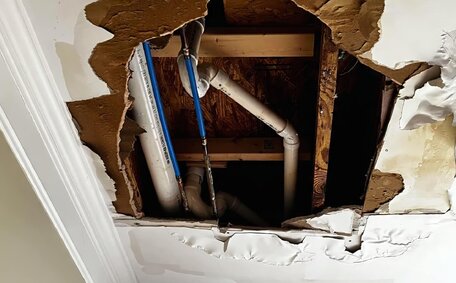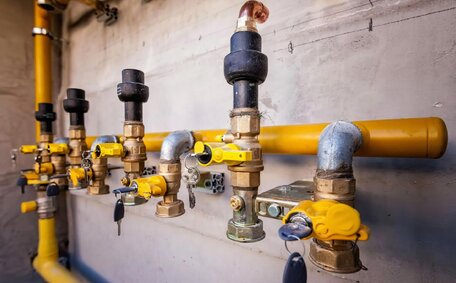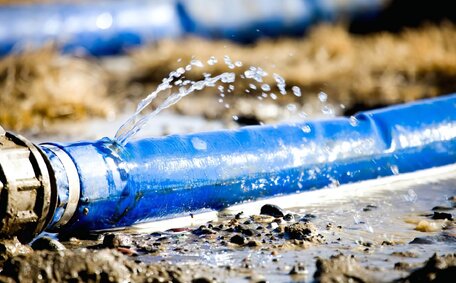The Advantages of Cooking with Gas
Cooking with gas offers several advantages for home chefs. Gas stoves and cooktops provide more immediate heat control compared to electric models, with the flame heating up pots and pans directly. This quick responsiveness delivers precise temperature regulation, fostering culinary creativity.
Gas burners guarantee uniform heat distribution across cookware, ensuring an even cook. This even dispersion of heat can allow you to avoid hot spots that can lead to burning. The open flame also ensures consistent heat around the pan, aiding in uniform cooking.
Gas stoves heat and cool quickly, facilitating precise cooking of natural ingredients. When using gas, you can go from a rolling boil to a gentle simmer rapidly, while electric cooktops retain residual heat for longer after being turned off. This rapid control outperforms electric stovetops, allowing for quicker cooking and easier clean-up.
Additional perks of gas cooking include its superior energy efficiency, reduced greenhouse gas emissions, and functionality during power outages. Although induction cooktops rival gas in precision, gas stoves generally cost less.
Lindfield Plumbing, your local plumbing and gas fitting specialist, has extensive knowledge in gas cooking systems. If you’re considering an upgrade to a new gas range, we’re here to help with safe installation and any gas line work needed. Contact us today to learn more about cooking with gas!
Faster Cooking and Boiling Times
A major advantage of gas stoves is their rapid water boiling ability compared to electric stovetops. Gas burners can rapidly boil water by applying intense direct heat to the base of a pot or kettle.
The exceptional boiling capacity of gas burners comes from their ability to provide instant heat, a feature not seen in electric ovens. Unlike slow-reacting metal heating elements in electric stoves that take time to warm up, gas flames ignite immediately for ultra-fast heating. The open flame also circulates hot air around the pan sides, preventing cool spots.
- Fill a pot with water, place on a high-powered gas burner, and turn to the maximum flame height.
- Watch as the water can quickly come to a vigorous boil in just 2-4 minutes.
- Once boiling, turn down the gas flame to maintain the rolling boil without boil-overs.
- The quick boil capability of gas stoves makes them ideal for tasks such as blanching vegetables, cooking pasta, or preparing fast-cooking dishes.
Beyond boiling, gas also permits faster other cooking techniques and searing. The instant, high heat sears meats and crisps vegetables with excellent browning. Wok cooking over a gas flame yields stir-fries with brilliantly caramelised flavours too.
With instant temperature control, a gas stovetop smoothly transitions from high searing heat to moderate settings. Such responsiveness ensures perfect cooking outcomes and simplifies stovetop clean-up post-cooking. And cleanup is easier since gas cooktops cool faster after use.
Precise Temperature Control
A significant benefit of gas stoves is their excellent precise temperature control. Gas burners heat up and cool down rapidly, providing immediate control over the level of heat you apply.
Gas stoves excel in providing precision for temperature-sensitive cooking. Delicate foods like eggs, seafood, and sauces can be cooked flawlessly without burning. Baking projects also benefit from the exacting control gas allows.
For perfect creme brulee, gently cook the custard to prevent curdling and caramelize the sugar topping evenly. Direct heat control allows for perfect custard preparation and even caramelisation without burning.
Dual fuel ranges, which use both gas and electric, enable fine-tuning heat to suit the needs of any recipe. You can easily sear meat over high heat before lowering the temperature to finish cooking. Bringing liquids to a boil then reducing to a simmer takes only a quick flick of the switch on the gas range.
Superior temperature control and rapid heating make gas a preferred choice due to its versatility. Gas cooking unlocks complete culinary potential, whether delicately poaching fish or quickly stir-frying vegetables.
Reliability During Power Outages
One of the standout benefits of fuel ranges, such as gas stoves, is that they can remain operational even during a power outage, thanks to an independent inside oven cavity not reliant on electricity. Gas burners and ovens rely on the gas fuel supply rather than electricity to provide heat and light the flame.
With gas, you can continue meal preparation even during power outages. The stovetop burners will still ignite in less time, and a gas oven with an electric pilot or continual pilot light system will stay lit.
The ability to cook during blackouts with gas ranges feature provides invaluable peace of mind. Gas ranges allow you to boil water for coffee, make hot meals, and avoid wasting perishable foods when your fridge and other appliances lose power.
During power outages, gas cooking also provides additional light in the kitchen. And since the burners heat up extremely quickly, you can rapidly boil water for sterilisation or cooking if taps stop running.
The operational independence of gas stoves during power outages marks them as a smart, dependable option. This reliability is crucial for household preparedness in emergencies.
Cost Efficiency Compared to Electric
One of the biggest financial benefits gas cooking offers is that it can cost significantly less than electric stoves. Natural gas yields lower operating costs, with gas appliances using about half the energy of electric models, cutting down your energy bills. Gas burns efficiently, converting more energy into usable heat.
The latest high-efficiency gas models can achieve up to 95% energy conversion efficiency. Comparatively, standard electric coil stovetops only convert about 70% of their energy input into usable heat. This energy waste translates into higher electricity bills over time.
Increased efficiency translates to lower operational costs for gas appliances, resulting in reduced fossil fuel consumption. Cooking a meal on a gas stove can cost around half as much as cooking the same meal on an electric range. Yearly, using gas for stovetop cooking and baking could save you up to $100 in energy costs.
Gas stoves and ovens often offer higher upfront costs than electric models. However, your long-term energy savings can offset the initial investment over time. For most homes, gas works out to be the more cost-efficient cooking fuel overall.
Versatility for Different Cooking Techniques
One of the best features of gas stoves is their unmatched versatility for different types of cooking techniques, standing out in the gas vs electric cooktops debate. From simmering and poaching to searing, gas gives you complete control to master a wide range of cooking styles.
The open flame and instant heat adjustments ensure that you’re cooking with precision, allowing you to quickly shift from a gentle simmer for making sauces to a blast of intense heat for stir-frying or searing a steak. This makes gas the preferred fuel of chefs who need to use multiple cooking methods.
Pan-frying fish in a stainless steel skillet benefits from being able to turn the heat up and down quickly to get a crispy exterior while keeping the interior moist. Gas provides the flexibility to master a range of cooking methods, from roasting to rapid boiling.
The direct heat of a gas type range is also unmatched for pasta dishes, allowing you to vigorously boil water then immediately reduce to a low simmer for the perfect al dente texture. Wok cooking, grilling, broiling and baking all excel with the responsive heat control gas affords.
From the lowest simmer for melting chocolate to the hottest sear for blackening Cajun spices, gas puts all cooking techniques at your fingertips. Such versatility empowers home cooks to broaden their skills and conquer diverse global culinary styles.
Environmental Considerations of Gas Appliances
Gas stoves are fast, efficient, and cost-effective, but certain environmental factors need consideration.
Compared to electricity generated from coal, gas can produce less carbon dioxide emissions. However, gas appliances can emit lower levels of other air pollutants like nitrogen oxides into indoor air while operating.
To mitigate effects on indoor air quality, use an externally vented range hood while cooking and maintain clean, well-adjusted gas burners for complete combustion.
Over time, gas appliances are becoming even cleaner and more efficient. Models featuring electric ignition eliminate the need for a constantly burning pilot light. And enhanced cooktop ventilation is being developed to further improve air quality.
When replacing gas appliances, look for ENERGY STAR rated options that meet strict emissions standards for high efficiency and low greenhouse gas output. While NW natural gas remains a practical fuel source, switching gas to induction electric in the future can reduce dependency on traditional gas options.
Lindfield Plumbing is dedicated to ensuring your commercial kitchen is outfitted with clean, efficient commercial gas appliances. Contact us to learn more about energy-saving gas stoves or converting to electric when the time is right for your home.
However, gas aintain clean, well-adjusted gas burners for complete combustion.
Models featuring electric ignition eliminate the need for a constantly burningith gas offers rapid heating, but precautions are essential for health and indoor air quality. Gas stoves and ovens can emit small amounts of nitrogen oxides and other pohile cooking and allow it to run for a few minutes afterward to clear the air.
Its also helpful to keep gas burners properly adjusted for complete, efficient combustion. Blue flames mean full combustion, meaning can indicate that your gas stove is operating efficiently, while yellow flames suggest the need for maintenance to optimise air-fuel mixing. Keeping burners clean can also reduce emissions.
Additionally, cooktop barriers and downdraft systems can enhance ventilation. Lastly, consider upgrading older gas appliances to newer, more efficient ENERGY STAR models.
At Lindfield Plumbing, we’re happy to assist with installing effective kitchen ventilation solutions and discuss the benefits cooking gas can bring. Contact us to keep your indoor air fresh while enjoying the speedy cooking benefits of gas.
Safety Tips for Cooking with Gas
Cooking with gas offers convenience and responsiveness, but it’s important to keep safety in mind. Here are some tips for using your gas stove or oven safely:
- Have gas appliances installed and serviced by licenced professionals. Gas fitters can ensure proper ventilation, leak testing, and operation.
- Check for gas leaks periodically with a soapy water solution. Bubbles indicate a leak that requires immediate repair.
- Keep the stovetop and oven burners clean to allow proper air flow. Clogged ports can lead to poor combustion.
- Never leave cooking unattended, especially at high heat, as it poses a significant fire risk.
- Keep flammable items like dishtowels and paper away from the range.
- Ensure adequate kitchen ventilation while cooking to reduce exposure to any air pollutants.
- Install carbon monoxide detectors near gas appliances as an extra precaution.
- If you smell gas, avoid sparks or flames. Do not turn lights or appliances on or off. Open windows and evacuate, then call the gas company.
At Lindfield Plumbing, safety is our top priority. Contact us to learn more about properly maintaining your gas appliances or upgrading to new, efficient models.
The Future of Cooking Technologies
While gas stoves currently provide many benefits like fast boiling times, precise temperature control, and reliability during power outages, cooking technologies continue to advance.
Induction cooking has emerged as an energy-efficient alternative that rivals gas’s immediacy and precision by using electromagnetic energy to heat pans directly. Induction cooktops heat up and cool down rapidly for similar responsiveness as gas.
However, many households continue to use gas due to its current advantages in cooking efficiency. However, cooking natural gas, with its even heat distribution, remains a practical option for many households currently.
Consumers should weigh factors like upfront costs, energy efficiency, and environmental impacts when choosing cooking appliances. Needs like speed, heat control, and versatility may make gas stoves a top performer still.
At Lindfield Plumbing, we keep up to date on the latest cooking technologies while continuing to service and install gas appliances safely. Contact us to determine the best cooking method for your home and lifestyle.






